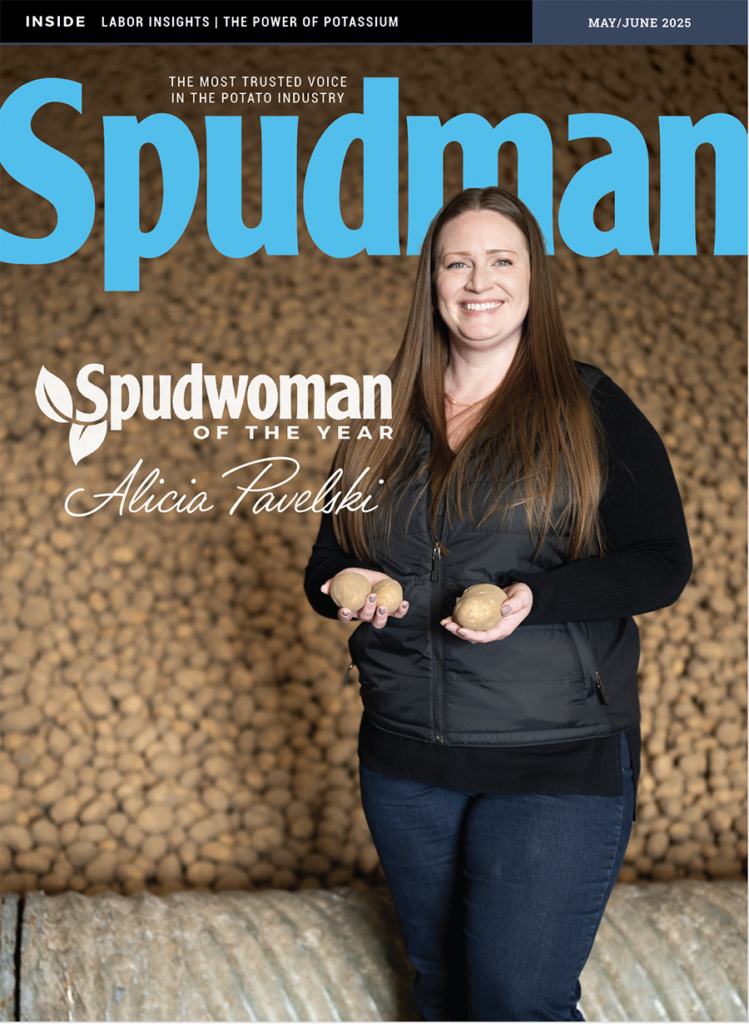Jun 2, 2016Potato storage research advances
Researchers in the College of Agricultural and Life Sciences at the University of Wisconsin, Madison conduct potato storage research to assess new varieties.
Variety-specific best practices are developed at the UW, Madison Hancock Agricultural Research Station, said Troy Fishler, storage facility manager.
Fishler sat down with University of Wisconsin Extension’s Sevie Kenyon to discuss research used to determine best practices in storing potatoes. A full transcript is provided below. For audio, view the interview on the University of Wisconsin Extension website.
Sevie Kenyon: New advances in potato storage helping our Wisconsin growers. We’re visiting today with Troy Fishler, Hancock Agricultural Research Station, University of Wisconsin-Madison in the College of Agricultural and Life Sciences and I’m Sevie Kenyon.
Troy, you’re working with potato storage here, why is that so important to our growers?
Troy Fishler: The longer that you can store potato and maintain that quality throughout the storage longevity, the higher the premium price the growers are going to get paid from the particular market they ship the potatoes to.
Sevie Kenyon: Troy, we’re in a potato storage research facility; can you tell us how the storage research works?
Troy Fishler: What we mainly do here is to assess some of these new varieties from a storage end of things to make sure they’re going to hold up to our current varieties or hopefully better.
Sevie Kenyon: Can you briefly describe some of the challenges to storing potatoes?
Troy Fishler: So potatoes need basically three things. Those are controlled temperature, you need to control the humidity and you also need to give them fresh air exchange because they’re living, respiring organisms that are giving off CO2, just like you and I.
Sevie Kenyon: How does this all work into the storage?
Troy Fishler: Really here at the facility we store potatoes one of two ways. We have these lockers where we store our small, statistical plots in 40 pound crates and these are on pallets and then we also have bulk potato storage bins where we store them in commercially acceptable 18 foot pile height, which is what our commercial growers down the road store them in these big warehouses.
Sevie Kenyon: What’s new in potato storage research here?
Troy Fishler: Really, I think it’s just improving on developing the variety-specific best practices because no two varieties behave the same. And really what we’re trying to find out, more than anything, is how do these varieties differ and then most importantly to come up with these variety-specific storage best practices; one variety may store a little cooler than the other, one variety may need little different air exchange in terms of more fan speed, those are things we are trying to identify in the storage research aspect of these new varieties.
Sevie Kenyon: Troy, this facility has been here 10 years now, what kind of changes have you seen over that time?
Troy Fishler: I think for the most part we’re getting very high tech. The simple things like our new high resolution photo light box in the lab to just some of the different ways we’re storing them too. We just started a new box bin program and then just kind of adapting that to the current amount of seed that we have available to grow these.
Sevie Kenyon: Troy, describe that new box bin system.
Troy Fishler: So previously, we just had two options: storing potatoes in 40 pound crates on pallets in our lockers or storing them in these bulk bins, which stored at 18 foot pile height. What we just started doing for the first time this past year was taking one of our bulk bins and instead of filling it with bulk potatoes we have plastic macro bins as they’re called and they each hold about 1000 pounds. And then instead of storing just one variety in that bulk bin, we can store up to 48 different varieties and assess these new varieties that are coming out of the University of Wisconsin’s breeding program.
Sevie Kenyon: We’ve been visiting today with Troy Fishler, Hancock Agricultural Research Station, University of Wisconsin-Madison in the College of Agricultural and Life Sciences and I’m Sevie Kenyon.














